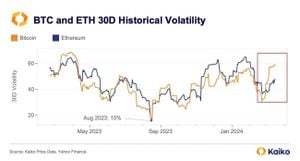Recent research has shed light on the mechanisms by which lysine-specific demethylase 1 (LSD1) contributes to the suppression of cellular senescence, offering insights relevant to age-related diseases.
Cellular senescence, characterized by permanent cell proliferation arrest, can arise from various stressors including DNA damage. New findings published by Osumi et al. reveal how LSD1 plays a significant role by being activated through riboflavin uptake, leading to increased levels of flavin adenine dinucleotide (FAD), and promoting demethylation activities.
Prior to this study, it was known from previous work with the riboflavin transporter SLC52A1, which heightened expression under senescence-inducing stimuli, could suppress cellular aging. The exact pathways connecting increased riboflavin uptake to cellular functions remained unclear until now.
The researchers found LSD1’s expression could be elevated through the increased availability of FAD, enabling LSD1 to effectively demethylate histones and the transcription factor p53, which are known to regulate senescence-associated genes. “Our results suggest LSD1 suppresses senescence through epigenetic regulation and directly via p53 demethylation,” commented the authors of the article.
To examine the effects of LSD1 on cellular senescence, U2OS cells—human osteosarcoma cells known for their use as model systems—underwent treatments with etoposide, which induces DNA double-strand breaks, leading to senescence processes. The experimental results showed LSD1 inhibition directly correlated with increased markers of senescence such as SA-β-galactosidase activity, and the activation of pro-senescence proteins like p21 and Sirtuin-4.
Interestingly, overexpression of LSD1 exhibited the opposite effect, confirming LSD1’s protective role against cellular aging. Therefore, it is worth noting the feedback mechanism at play: “LSD1 inhibition promoted the senescent phenotype, highlighting its protective role against cellular aging,” the authors stated.
The study also indicated how riboflavin's role, and by extension the increase of FAD levels after uptake, are pivotal for LSD1's demethylation activity which has broader implications for the regulation of cellular aging and potential therapies for age-associated diseases.
This research expands our knowledge of how metabolic processes interplay with cellular aging and indicates the necessity of mobilizing resources like riboflavin not only as nutritional supplements but as potential adjunctive therapies addressing cellular senescence. Future research will focus on this nutrient-enzyme pathway and its potential applications for treating age-related conditions.
Overall, this work elucidates the complex biological interactions at play between metabolism and cellular aging, giving room for intriguing exploration of new therapeutic avenues.



